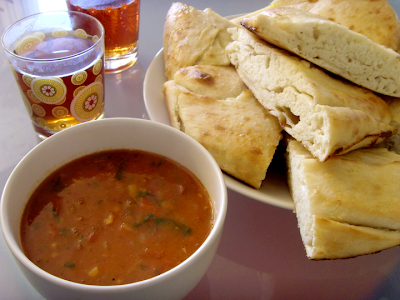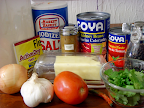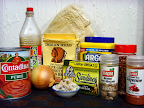Answer: very hard. There is not much at all in English, and though Kitty's Korean skills are nowhere near up to this task, there didn't seem to be much useful information in that language either. What little information we could find suggested that it was either very similar to the South Korean breakfast, or nothing at all (probably much dependent on whether you are in the army or an otherwised privileged member of society).
In light of our research fail, we present instead a sample of Whit's other food project, sausage-making. Kim Jong-il probably has sausage for breakfast every day anyway...
Breakfast Sausage with Sage and Ginger
The following is an overview of the sausage making intended to make the process less intimidating with the hope that the reader will be inspired to give it a go. For an amazing book on sausage making and other meat-related topics with much more detail get Charcuterie by Michael Ruhlman and Brian Polcyn.
Tools
- Meat grinder or grinder attachment for a stand mixer
- Meat funnels
- Ruler
- Kitchen scale
- 5 lbs boneless pork shoulder, diced
- 40g kosher salt
- 50g peeled ginger, finely chopped (or 8g ground dried ginger)
- 18g minced ginger
- 6g black or white pepper
- 1 cup chilled water
- 10 ft hog casings
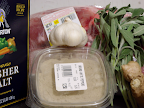
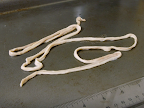
Soak the hog casings in room-temperature water for at least 30 minutes prior to stuffing. Place your grinder and any bowls you plan on using in the refrigerator or freezer prior to starting. Keeping the ingredients cool prevents the fat and meat from separating and improves the texture.
Grinding
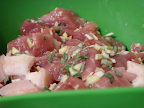 Mix all the ingredients into a cold bowl, excluding the water. Grind the mixture using the fine grind/small die plate into chilled bowl.
Mix all the ingredients into a cold bowl, excluding the water. Grind the mixture using the fine grind/small die plate into chilled bowl.The Primary Bind
This step makes the ground meat stick together and ensures a more uniform texture. Add the water and mix well for 1 minute. The paddle attachment and the metal bowl of a Kitchen Aid mixer are excellent for this step. Place the bound mixture back into the refrigerator until it is needed.
Stuffing the Sausages
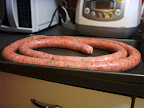
- Put the bound sausage filling into the stuffing machine or back into the grinder.
- Fill the casing (use any leftover fillings to make patties)
- Twist the casing into links of the desired length
- Roast or saute the sausages (wrap any uncooked sausages in freezer paper and save them for later or give them away to friends in order to be showy)
Homemade sausage differs greatly from what is found in most grocery stores. The texture and flavor are amazing. There is a freshness one is not accustomed to in most sausages. The natural casings have an excellent snap and aroma as they brown on the outside.
The start up costs of making sausages are not too bad. The Kitchen Aid grinding and stuffing attachments are less then $100 and the grinder has uses beyond sausage making. However, stuffing with the grinder is not optimal. It is slow and you encounter problems with air pockets when loading the grinder. Stuffing machines are rather expensive and only do one thing. (But they do this one thing very well, and I look at pictures of them in catalogs and covet because they are so much faster.)
A video on the process can be found here, and a video of the process starting with an entire pig can be found here.

